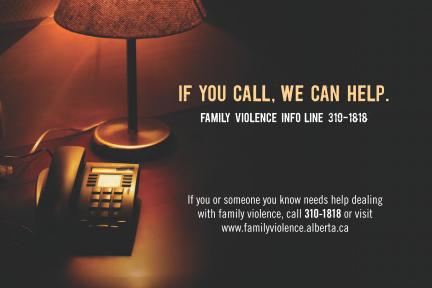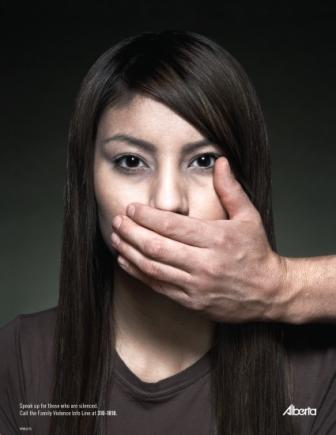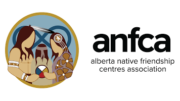The Alberta government has designated every November as Family Violence Prevention Month across the province. It began in 1986 as a community initiative in Hinton, Alberta. A group of concerned citizens formed the Hinton Society for the Prevention of Family Violence and launched a domestic violence and education campaign. Now communities throughout Alberta hold events to increase awareness of the problem and present some prevention strategies.
Here are nine important things you should know about family violence:
1. According to police statistics, family violence happens in all Alberta communities – yes, even in your community.
- Family violence crosses all social, cultural and socio-economic boundaries.
- It touches people of all ages, genders and walks of life.
- The abuse can cause physical, sexual, emotional and/or financial harm. Being threatened with or experiencing violence creates a pattern of ongoing fear.
- If you look closely, you may recognize the warning signs of abuse in your own neighbourhood or workplace.
- What can you do when you suspect a family violence situation? Families, friends, neighbours and co-workers are in a unique position to reach out to those affected by family violence.

2. We are all paying a high price for family violence.
- Family violence can have devastating effects for all family members.
- In the short term, for example, parents may have to miss work or receive medical care, and children may not be able to concentrate at school because they are upset.
- In the long term, family members may not be able to achieve their full potential at work, school or in their community.
- Family violence is not just a “private family matter” – it’s a crime, and it affects the entire community.
- In a 2012 survey conducted by Ipsos Reid, 90 per cent of Albertans polled said that family violence prevention should be an urgent priority for the Government of Alberta.
- The costs of family violence for employers, health, legal and social service systems can also be astronomical. According toone study, “In the past five years alone, it is estimated that over $600 million will have been spent on the provision of a few basic health and non health supports, and that the majority of this cost ($521 million) is coming out of the pockets of Albertans in the form of tax dollars directed at the provision of services.” (Wells, Boodt and Emery, 2012)
- Family violence is also a serious public health issue, according to the World Health Organization.
3. Children are harmed by family violence, whether it’s the child or other family members being directly harmed, and even if they’re in another room when it happens.
- Children exposed to family violence can be affected as much as the individual experiencing the violence.
- Some parents hope that if their children do not see the violence, it will not harm them. Others think they can protect their children from the impact of the violence. But family violence harms children, even if they are not consciously aware of the violence.
- Exposure to family violence can affect a child’s brain development, emotional well-being, learning and ability to connect with other people and make friends.
- You can learn to recognize some of the signs and symptoms of children exposed to family violence.
- Kids rely on responsible adults to look out for them. If you suspect a child is being abused, neglected or exposed to family violence, you are legally required to report your suspicions immediately. Call 911, your local Child and Family Services or the 24‑hour Child Abuse Hotline at 1‑800‑387‑KIDS (5437).
- Safe visitation services provide children support to have safe, supervised visits with a non-custodial parent while addressing safety concerns for all family members.
- It’s important for everyone to know that there is hope for children and their parents. Research shows that if children are no longer exposed to family violence, and if the family receives the necessary services, they can all be supported in achieving a healthier life – for both the children and adults.
4. Youth who are dating are at risk of family violence.
- Youth are particularly vulnerable to dating violence since they don’t have as much experience to draw on when making decisions in dating relationships.
- The end of a relationship is one of the most dangerous times in an abusive relationship. The abusive partner is losing control and may do everything possible to get it back. In this situation, there is an increased risk of violence, harassment, threats and emotional abuse.
- Stalking is a crime, and is often an extension of family violence.
- Youth can take this relationship quiz to see if their relationship is healthy, and follow these dating safety tips.
5. Older adults and people with disabilities are more vulnerable to family violence.
- We might not want to think about abuse of seniors or older adults and persons with disabilities, but it happens more than we think.
- These individuals may not have the capacity to protect themselves, so they are counting on us to look out for them.
- Besides physical, emotional and sexual abuse, older adults and people with disabilities can also be vulnerable to financial abuse. This can include spending a person’s paycheque or limiting their access to finances.
6. Abused men and women have different experiences and support needs.
- Both men and women can be victims of family violence, and their experiences can be unique. For example:
- Many women abused in intimate relationships first experience physical violence while they are pregnant;
- Men abused by women may prefer accessing information and services through non-traditional outreach approaches to support their needs, rather than through traditional residential-based shelter services;
- Men and women in same-sex relationships may avoid getting help for abuse because of fear of being “outed” or discriminated against;
- Women and men from Aboriginal and ethno-cultural families may be dealing with cultural values that complicate their experiences of family violence, and they may require translation services to get the support they need.
- A range of services and support is available for women and men, and can be accessed through the 24‑hour Family Violence Info Line, toll-free in Alberta at 310‑1818. Help is available in more than 170 languages.
7. An abusive or violent episode is rarely an isolated incident, and the violence will likely escalate over time.
- Family violence is a pattern or cycle of controlling behaviour.
- In families, an abusive person can use many tactics to gain power over another family member.
- Violence could happen again at any time, so an abusive or violent incident needs to be taken seriously.
- Without help or intervention, the abuse is likely to escalate by becoming more frequent and more severe, over time.
- The Protection Against Family Violence Act (PAFVA) helps protect victims of family violence through protection orders, which can provide an immediate period of safety for victims of family violence.
- It is important for victims to create a safety plan if they are not able or ready to leave the relationship.
8. Family violence is a learned behaviour, so it can be un-learned and replaced by healthy relationship skills.
- Sometimes children learn how to be abusive or violent if they are raised in a violent home.
- Abusive behaviours are always a choice. It doesn’t matter what the abuser’s background or experience is, they must take responsibility for their actions. No one has the right to abuse someone else, and no one deserves to be abused.
- There are many adults who have chosen to break free from a violent past and they have developed healthy, loving relationships with their own families.
- Many men are taking leadership roles in family violence prevention and in educating others about respectful relationships.
- We can all take action to model healthy relationships in our homes, families and communities.
9. Help is available, day or night.
- We all share the responsibility to reach out to those affected by family violence;
- If you or someone else is in immediate danger, call 911;
- For information or advice, call the 24‑hour Family Violence Info Line, toll-free in Alberta at 310‑1818, or talk to a trusted family member, close friend, teacher, counsellor or faith leader;
- Learn more about what you can do so you are prepared to respond to family violence when it happens.





Be the first to comment on "November is Family Violence Prevention month in Alberta"